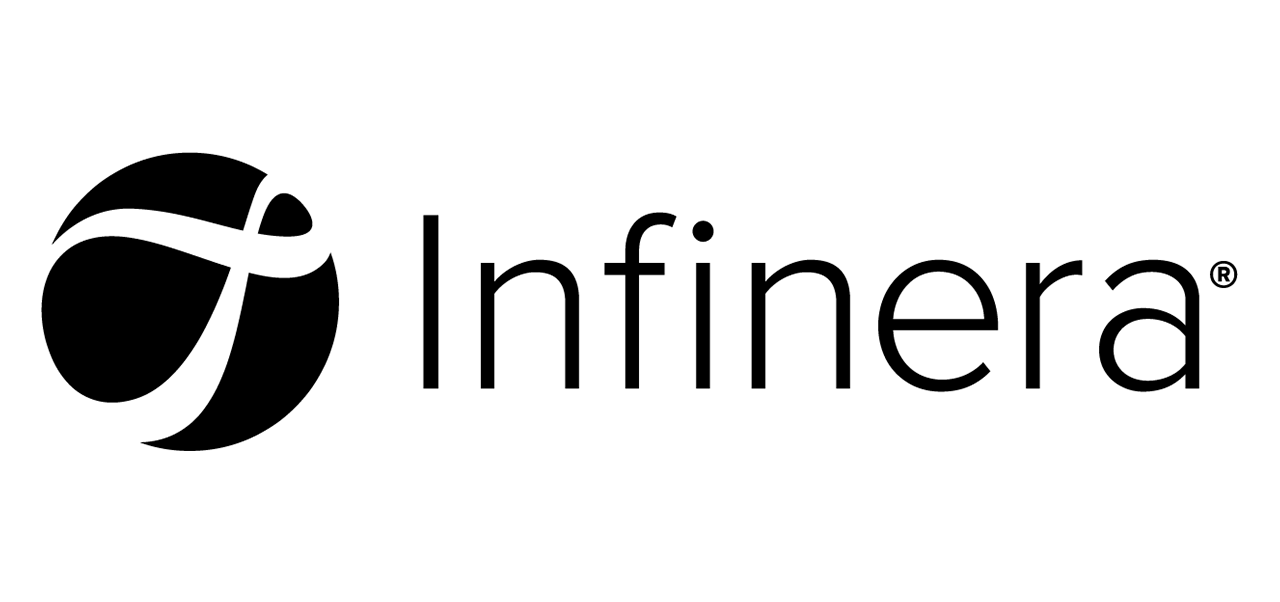Coherent Optics: 100G, 400G, & Beyond
Publish Date: October 2022





The optical industry is at an inflection point as coherent innovation forks in two different but equally important directions: high performance optics and coherent pluggable optics.
On one end, high performance optics are driving capacity beyond the 1Tbps per wavelength while the laws of physics brush up against the maximum channel capacity defined by the Shannon limit. Components and systems vendors are developing new innovations that eke out more capacity on fiber, but each innovation comes with increasing cost and complexity.
On the other end, coherent pluggable optics are converging at 400Gbps transmission, the data rate that is set to play a dominant role in optical networks over the next decade. New 400ZR, 400G ZR+, and 400G XR pluggable coherent form factors hold the potential for lowering capex, fostering optical layer interoperability, and defining new metro/regional network architectures based on IP over DWDM (IPoDWDM).
While the 400ZR revolution was driven by hyperscalers, communications service providers (CSPs) see coherent 400G as a major opportunity to apply this technology throughout their networks. This includes migrating from traditional embedded optical systems to pluggable-based DWDM wherever possible. Meanwhile, coherent pluggable optics are being eyed for a potentially significant role in the “middle mile” or optical edge. Here, coherent 400G may be too much capacity, power, and cost, but lower power coherent 100G pluggables may hit the application sweet spot.
Heavy Reading launched its inaugural Coherent Optics Market Leadership Program in 2021 to investigate the opportunities and challenges in highest performance optics for 800Gbps and beyond and compact pluggable optics for 400Gbps. This 2022 edition builds on the foundations of the 2021 study and also investigates new ground as coherent optics evolves along the 400G trajectory and moves both upmarket (to coherent 800G) and downmarket (to coherent 100G pluggables).
This white paper is based on Heavy Reading’s 2022 Coherent Optics Survey results. It provides the industry’s most in-depth look at the current state and future trajectory of coherent optical transmission, covering the following:
- Architectures and applications, including the benefits and challenges in coherent IPoDWDM
- Features and requirements for 400G systems
- 400G optical transport services
- Coherent 800G embedded and pluggable optics
- Coherent 100G pluggable optics
The 2022 project partners for the Coherent Optics Market Leadership Program are Ciena, Effect Photonics, Infinera, and Ribbon.

2020 Open RAN Operator Survey: Measuring Progress and Looking Ahead to Open RAN at Scale
ARCHITECTURES AND APPLICATIONS
The move to 400G entails a number of big decisions. Do you standardize on pluggable optics or opt for a mix of embedded and pluggable options? If so, what goes where? Do you migrate to IPoDWDM, retain traditional DWDM systems, or opt for a mix of both? If maintaining traditional DWDM systems, what role (if any) should 400G coherent pluggables serve? This section tackles these and other key architecture and application topics for 400G.
Network operators are evenly split on their coherent optical evolution strategies. 35% of respondents intend to use whatever technology provides the lowest total cost of operations (TCO) for each network segment, while 36% plan to standardize on pluggable optics in the aggregation/metro and 600G/800G for the long-haul/backbone network. Not surprisingly, just 13% will standardize on a single technology for the whole network (see Figure 2).
400G+ coherent optics include embedded and pluggable forms and can be used across multiple system types, such as in traditional DWDM systems or integrated directly into switches/routers (i.e., IPoDWDM). Looking to 2024, in aggregate, the survey data shows 61% deployed in traditional DWDM versus 39% integrated into switches/routers. Within DWDM systems, operators expect an even mix of 400G+ in metro and regional/long-haul.
Given the early stage of the market evolution and the telecom audience surveyed, the results are a strong endorsement for IPoDWDM. Expectations may prove too optimistic, but the intentions of network operators cannot be ignored. Operators have consistently expressed strong interest in coherent 400G for IPoDWDM architectures in multiple Heavy Reading surveys over the past two years (see Figure 3).
n=80
Source: Heavy Reading, 2022
Drilling into IPoDWDM a bit deeper, Heavy Reading sought to understand the types of optics operators want to use. Early coherent pluggables, such as those defined in the OIF implementation agreement, have low output power (i.e., -10 dBm) that is suitable for point-to-point data center interconnect (DCI) applications but not for more complex telecom networks. New high output power optics (i.e., 0 dBM) are made to work with ROADM-based optical lines and in brownfield scenarios.
Operators surveyed are relatively evenly divided in their expectations for integrated optics, with a 54%/46% split favoring low output power (-10 dBm) optics slightly over high output power (0 dBM; see Figure 4 below).
Lack of convergence between IP and optics groups is commonly cited as a top barrier—both in past Heavy Reading surveys on IPoDWDM architectures and in individual discussions with operators and suppliers. But a large number of operators claim varying degrees of organizational convergence today. Heavy Reading wanted to understand how respondents with converged roles view top barriers to IPoDWDM adoption. Filtering results by those whose roles include both IP and optics (from Figure 1), Heavy Reading presents the top barriers to coherent IPoDWDM in Figure 7 below.
For this subset of operators, the lack of APIs to manage the optical layer rises to the top (selected by 38% of the group). The data suggests that as operators successfully tackle organizational convergence, the lack of APIs will become the next big issue to resolve. It is also interesting that, even for respondents in converged roles, the lack of convergence between IP and optical groups remains a primary IPoDWDM challenge. Ranking second, and tied with the lack of third-party pluggables options, lack of converged organization was selected by 31% of this subset. Results indicate that there is much organizational work to be done.
400G FEATURES AND REQUIREMENTS
Selected by 61% of respondents, remote diagnostics is the top advanced coherent DWDM pluggable feature demanded by operators. This feature is followed by auto-tunability (selected by 47%), high launch power (selected by 46%), and embedded optical spectrum analysis (selected by 40%). Remote diagnostics and auto-tunability both point to the importance of automation in next-generation transport networks.
High launch power optics are widely seen as essential for 400G+ pluggables in telecom applications (as opposed to hyperscalers). The survey data shows that high launch power is indeed an important requirement (see Figure 8).
For any given data rate, embedded optics are more costly than their pluggable counterparts. However, in return for costs, embedded optics bring performance gains, including higher spectral efficiency. Heavy Reading asked operator respondents to report just how much of a cost premium for embedded optics is justifiable—specifically in metro DWDM applications.
A majority of respondents expect a cost premium of less than 20%, as 45% identify a 10–20% premium as reasonable. Just 9% feel that anything greater than 30% is acceptable, indicating a fairly tight range of premium pricing options in the metro. Beyond higher spectral efficiency, another key differentiator for embedded optics is significantly longer reach. However, reach in the metro is limited (by definition), making coherent pluggable optics a much more competitive option in this segment (see Figure 9).
Still, for the near term at least, the majority of operators expect a hybrid environment of co-existence between pluggable and embedded optics within the metro. 57% of respondents expect a mix of embedded 600/800G and pluggable optics in their metro networks (see Figure 10 below). But the growing momentum of pluggables is clear, with nearly one-third (28%) of operators expecting 100–400G pluggable optics only versus just 15% expecting to standardize on high performance embedded optics. The majority of the metro market in telecom will be served by data rates below 600G.
Interoperability is a hot button issue in coherent pluggable optics. Heavy Reading asked operator respondents to identify the importance of coherent pluggable interoperability across the various network segments, from access to the core (see Figure 11 below).
Not surprisingly, short-haul metro and DCI tops the priority list, with 32% of respondents identifying multi-vendor interoperability as “critical.” Hyperscalers were instrumental in building the 400ZR standard for metro DCI applications and interoperability (including oFEC support) as part of the OIF implementation agreement.
Beyond metro DCI, interoperability becomes much more controversial. At the far end of the spectrum, operators require highest performance and highest spectral efficiency for ultralong- haul and subsea routes, and this demands proprietary optics for the foreseeable future. In the middle, however, operators must weigh the pros and cons of performance versus interoperability. But the survey data shows that operators are highly interested in interoperability in all segments when they can achieve it. Interoperability is critical in the metro, regional, and even long-haul segments for 23% or 24% of respondents (statistically the same).
400G TRANSPORT SERVICES
Coherent 400G interfaces enable single-wavelength 400G transport services in which 400G traffic from routers traverses the network at 400Gbps data rates. Such services can be part of an IPoDWDM architecture, or 400G routers can connect to DWDM systems via shortreach interfaces (i.e., the traditional means of connectivity). The top driver for 400G wavelength services, by far, is infrastructure optimization for internal networks. This driver was selected by more than two-thirds of operators surveyed (68% of the group) and well ahead of the second choice, standardization of router connections (selected by 48%; see Figure 13).
The data suggests that, for the global audience of operators, there are not that many customers currently that require full 400Gbps connectivity. Yet, there is value in grooming internal traffic up to 400G for greater efficiency and lower costs (e.g., fewer ports, lower cost per bit, etc.).
Figure 14: Who or what are your top drivers for 400G wavelength (or optical) transport services? (RoW vs. US)
In terms of timelines, there are a fairly significant number of 400G wavelength services available today, with 20% of respondents reporting already having services or expecting them by year-end (see Figure 15). An additional 29% expect to have 400G services by year-end 2023, meaning that, by the end of 2023, just under half (49%) of operators surveyed expect to have 400G transport services. Geographically, these early adopters skew heavily toward the US in terms of both currently deployed services and deployment expectations in the near term. The more aggressive US adoption rates are due to the hyperscale element that was discussed above.
800G COHERENT OPTICS
Like coherent 400G, the evolution of 800G optics is moving along two tracks: embedded technology and coherent pluggables. With embedded technology, 90+ Gbaud DSPs can operate at 800Gbps data rates today, though whether these systems actually run at the full line rate depends on link distances. Coherent 800G pluggable optics are not yet available, but work on commercializing 800G is well underway. Launched in December 2020, the OIF 800G Coherent project is defining interoperable single-wavelength 800G line specifications for both campus and DCI reaches. The implementation agreement is not yet completed.
This section explores operator views on 800G and 800G+ optics, including both embedded and pluggable formats. According to the survey, reducing cost and improving spectral efficiency represent the primary driver for 800G+ technology, selected by 59% of respondents. This driver stands out as the primary reason for deploying embedded 800G optics today as these operators seek to gain the greatest amount of capacity for any given reach in their networks (often in the 400–600Gbps range; see Figure 16).
Beyond reduced costs/greater spectral efficiency, standardization across the long-haul network, 400G+ long-haul connectivity requirements, and planning for high bandwidth links are all important drivers as well. These drivers also largely favor embedded 800G due to reach requirements.
As noted above, supporting 400G will be a major driver for adopting 800G optics. Among operators surveyed, 22% expect that, by 2024, 800G line rates in metro networks will be “critical” for efficiently transporting 400GbE clients. An additional 43% expect that 800G line rates will be “important” for this 400GbE application. Just 17% see 400GbE transport as “not important” (see Figure 17).
Pluggable optics are an important part of operators’ 800G strategies, and deployment expectations are aggressive. 20% of respondents expect to deploy coherent 800G pluggables in 2023, and an additional 20% expect deployments in 2024 (Figure 18). The timelines are ambitious, considering that the OIF implementation agreement is a work in progress and coherent 800G pluggables are not yet shipping. Often, with these types of questions, the timelines ultimately prove too optimistic. At 21% currently undecided, the high percentage is indicative of a nascent technology.
100G COHERENT PLUGGABLES
The coherent pluggable revolution began at 400G, but it has forked in two directions: to higher data rate 800G (as described in the previous section) and to lower data rate 100G. This section focuses on trends in 100G coherent pluggable optics, which many operators see as instrumental for next-generation optical edge applications.
100G coherent pluggable optics have existed for several years in CFP2 form factors with externally housed DSPs (known as analog coherent optics [ACO]). Roughly one-third (34%) of operators surveyed report that they currently use coherent 100G pluggables or expect to have them deployed by year-end. An additional third of respondents (32%) expect to deploy 100G coherent pluggables in 2023 (see Figure 19).
Edge strategies are driving a new wave of interest in and innovation for coherent 100G pluggables. For the optical edge, 400Gbps may be too much capacity and cost for many applications. Yet, innovations pioneered at 400G—including digital coherent optics (DCO) housed in client-sized form factors—hold strong appeal. The industry labels these new optics 100G ZR, and characteristics include QSFP28 form factors and 5 watt power consumption. Separately, the Open XR Forum was formed in 2021 to address access and edge applications with coherent pluggables that operate at 100/400G.
Heavy Reading believes it is these new coherent 100G technologies and form factors that are driving operator interest in the edge. And the interest level is very high. More than three-quarters of operators surveyed believe that 100G coherent pluggable optics are at least “important” for their edge and access evolution strategy, meaning that coherent 100G will be used extensively in these segments. For one-quarter of the survey group (25% of respondents), coherent 100G is “critical,” meaning that almost all 100G deployments will be based on coherent pluggables (see Figure 20). Just 1% of respondents see coherent 100G playing no role at the edge.
Delving deeper into the edge, Heavy Reading asked operators to identify the most common use cases for 100G coherent pluggables. Topping the list for the global audience are 5G mobile backhaul/midhaul (selected by 40% of respondents), 5G fronthaul (selected by 37%), and enterprise connectivity (at 36%). 5G is in the midst of the mass rollout phase globally. 5G and edge strategies are repeatedly cited in Heavy Reading surveys as operators’ top priorities, and the two are tightly linked.
Extending geographic reach (inherent in coherent technology), general 10G replacements, and residential broadband are all important, but less so compared to the mobile and enterprise use cases (see Figure 21).
However, use case priorities vary significantly based on geographic region, particularly when separating US respondents from their RoW counterparts. For the US, extending geographic reach is the top use case (selected by 45%), followed by 5G backhaul/midhaul and enterprise connectivity (each selected by 43%). Given the large geography of the US, the importance of 100G coherent technology’s greater reach makes sense. Many US operators will be able to upgrade networks to 100G in areas where reach limitations made direct detect 100G technology impossible. This value proposition holds true for other large countries such as Canada or Australia (see Figure 22).
Lastly, to better understand network operator requirements, Heavy Reading asked respondents about several technical parameters for 100G coherent pluggables, including form factor preferences, power consumption, and output power metrics. The results are consolidated in Figure 24 below.
Across the three metrics, the most clarity is shown in the form factor. At 47%, nearly half plan to use the QSFP28 form factor, while a much smaller number prefer QSFP-DD (at 31%). Still, 17% report that they “don’t know,” a high percentage indicating that many operators are in the early education phase.
For maximum power consumption, an even higher share of operators (25% of respondents) has not yet formed an opinion, and the results are similar for minimum output power (22% reporting “don’t know”). While the data shows a mix of preferences for both power consumption and output power, it is hard to align them with each other. For example, QSFP28 modules will not support the high output power that the majority of respondents anticipate.
Heavy Reading believes the biggest takeaway is that network operators have not formed solid preferences. There are two possible explanations:
- It is too early in the education phase for operators to have built out these requirements internally.
- Operators will instead focus on higher level requirements (e.g., capacity, compatibility, and distance) and leave the granular specifications to the systems and modules suppliers to sort out.

2020 Open RAN Operator Survey: Measuring Progress and Looking Ahead to Open RAN at Scale

Principal Analyst, Heavy Reading














